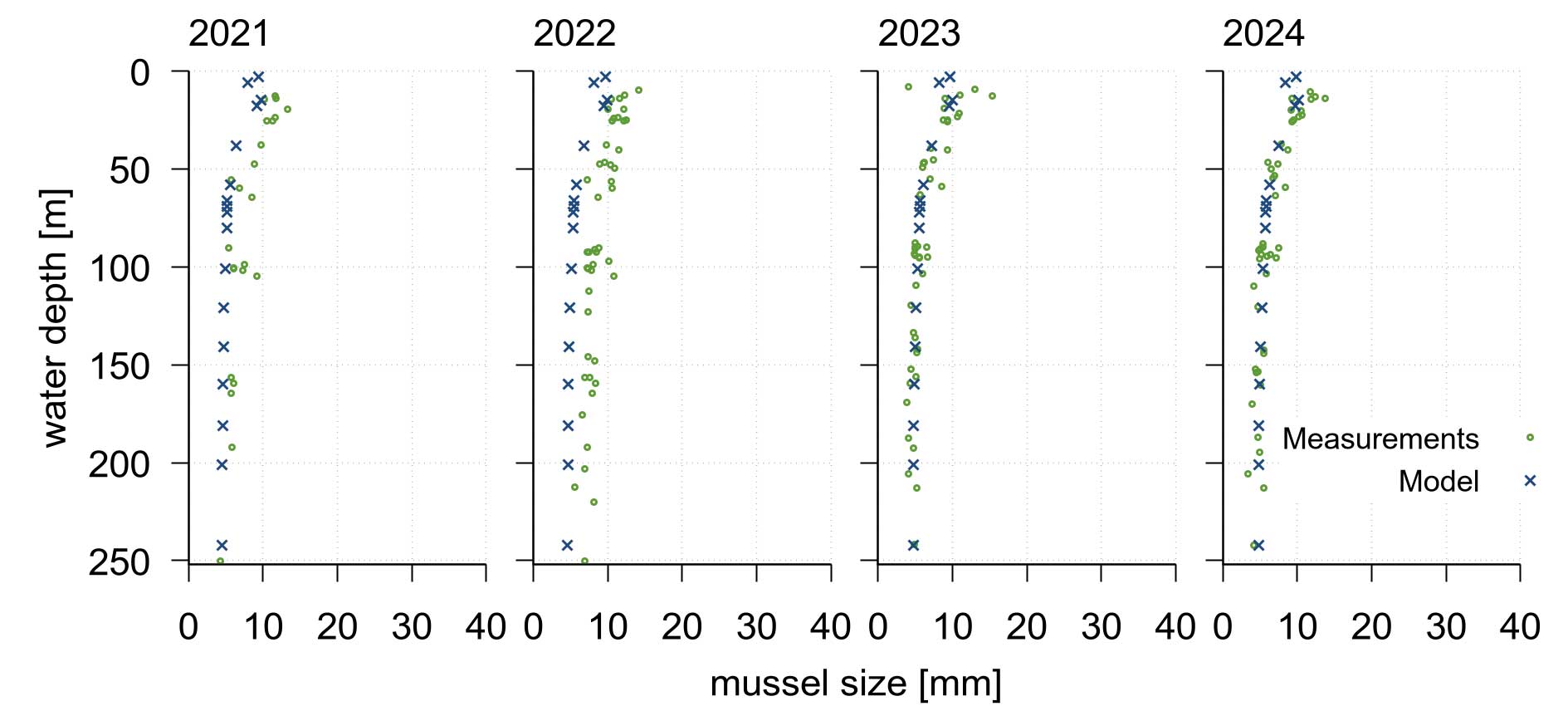Forecast of climate-induced changes in hydrodynamics and water quality in Lake Constance
Research approach
Numerical models allow to analyze and quantify the hydrodynamic, chemical and biological processes in lakes. For Lake Constance, the thoroughly tested three-dimensional model system from Bodenseeonline is available for this purpose. The system simulates the seasonal course of stratification, primary production and the relevant nutrients. In addition, the effects of flood events with increased sediment loads and inputs of oxygenated water into the hypolimnion can be quantified. Long-term simulations over the last few decades show the changes caused by reoligotrophication in the nutrient cycle, primary production and oxygen distribution. The model system is therefore ideally suited for predicting the effects of climate change on limnological processes in the lake. The available model ensemble enables simulation on different spatial and time scales.
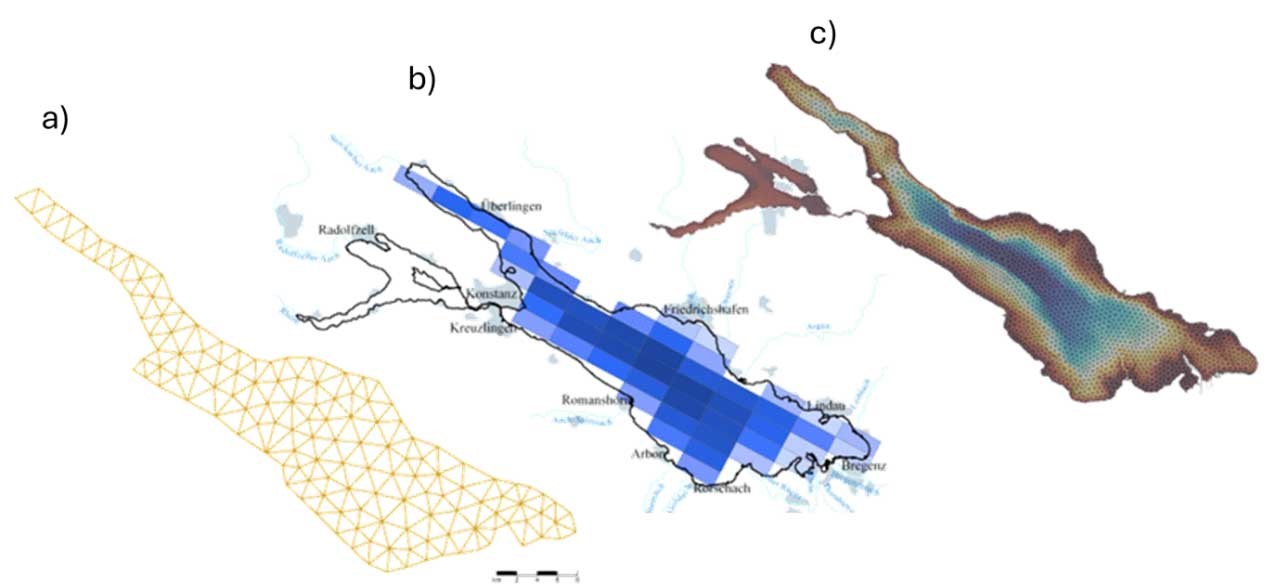
Model ensemble with model meshes for a) paleo simulations with flexible mesh, b) long-term simulations with finite difference mesh, and c) short-term simulations (a few years).
(© Kobus and Partner)
Planned work
The food chain in the existing Bodenseeonline information system will be expanded to include the growth and filtration processes of the quagga mussel. For the modelling of the development of the quagga mussel, a module was developed based on the data and experiences at the Great Lakes by Prof. Dr. Alexander Y. Karatayev. The module contains 3 size classes of quagga mussels and is part of the nutrient cycle.
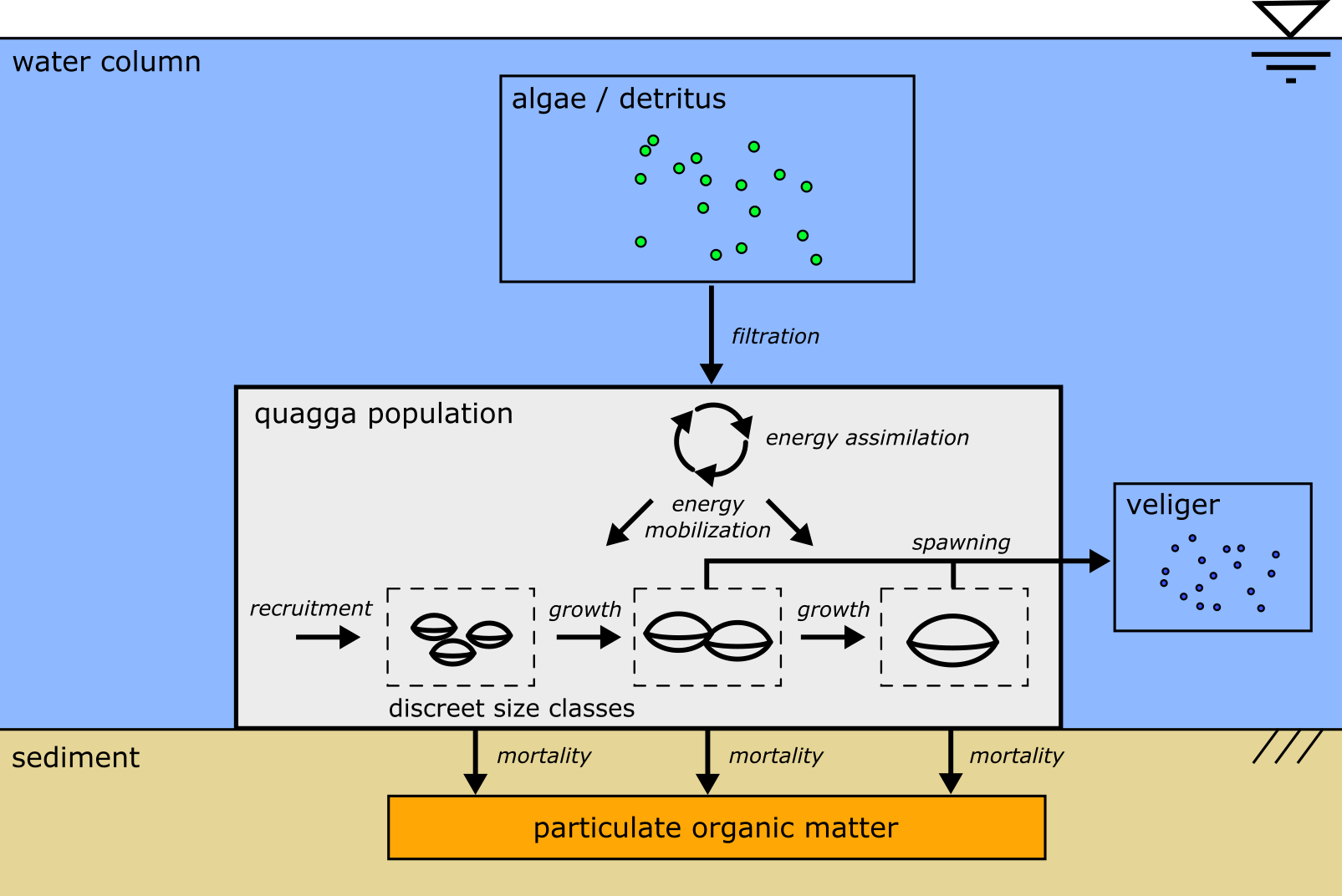
Model concept for the quagga mussel module with three size classes of mussels and integration into the nutrient cycle.
(© Kobus and Partner)
The growth of macrophytes will also be implemented into the model and the reproduction of zooplankton is further refined. Paleo simulations will be primarily used to examine long-term developments in the past using sediment samples taken at the Institute for Lake Research. The paleo observations will be used to identify relevant processes for forecasting in the event of climatic changes.
Objectives
The aim of the sub-project is to use the numerical model system to map the current development of neozoa. The following figure shows an example of the modelling accuracy.
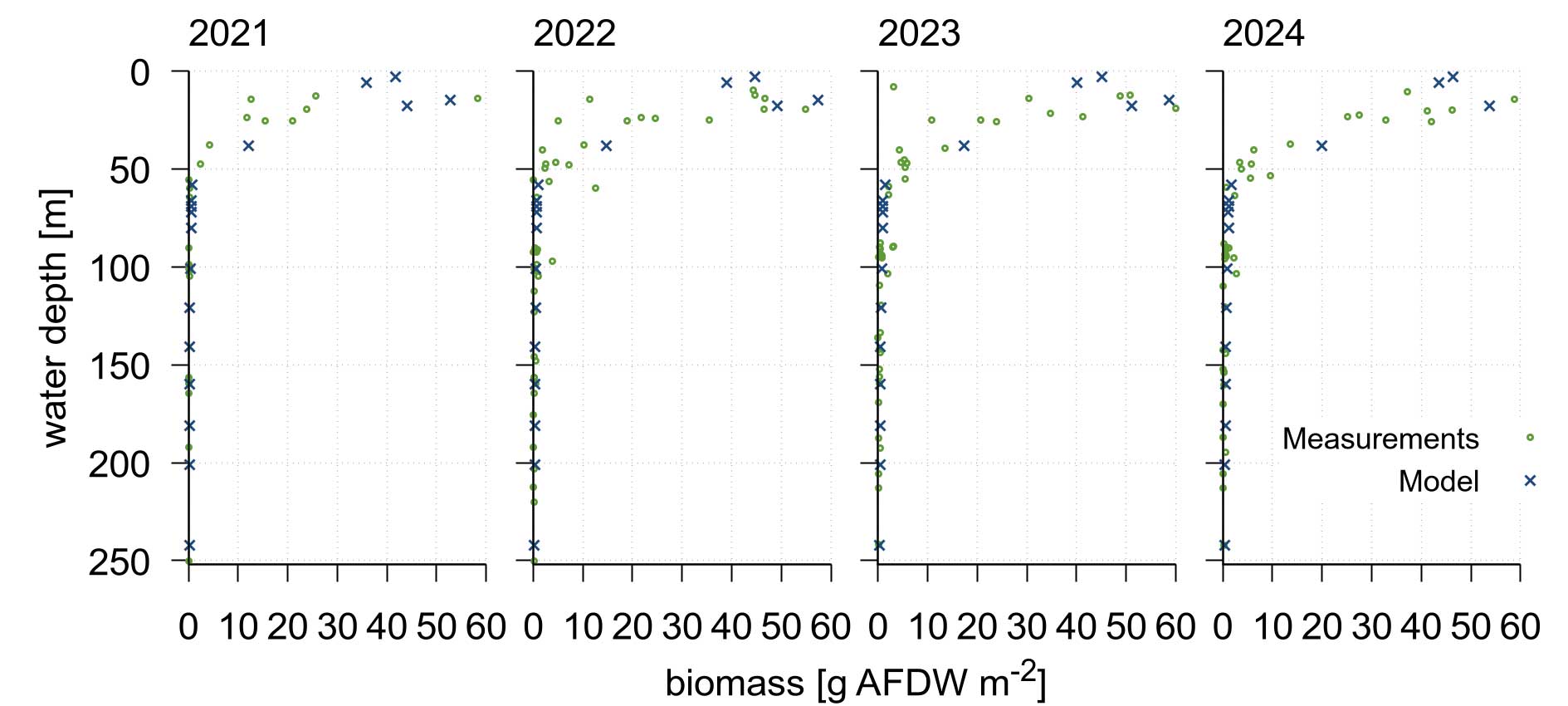
Comparison between measured and calculated quagga mussel biomass and quagga mussel size on the lake floor of Lake Constance for the years 2021 to 2024.
(© Kobus and Partner)
Taking climate-induced changes into account, the modelling system is used to make forecasts about the future development of stratification and exchange processes. Based on this, the biological and chemical developments will be simulated, including predictions on the distribution of the quagga mussel and how the nutrient cycle may change in the future. Since the future development of the biological processes depends on many factors, a sensitivity study will show the range of possible developments. The aim is to estimate the near future of the next 20 to 40 years.
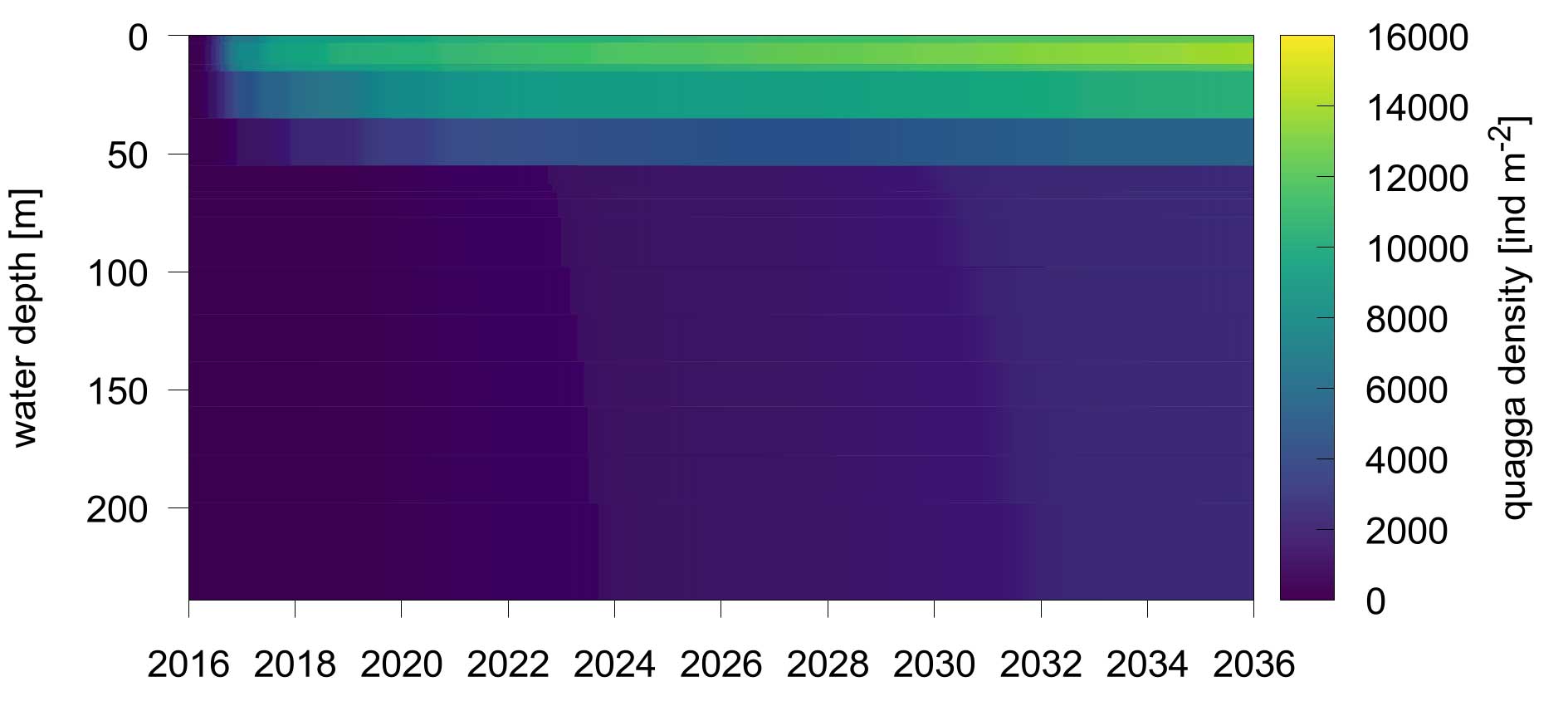
First forecast of the development of quagga mussel density as a function of depth.
(© Kobus and Partner)
Cooperation within the SeeWandel-Climate project
Development of quagga mussel module: definition of key parameters for growth, depth dependence, filtration, verification of model with comparative data (Eawag, sub-project 6A).
Development of macrophyte module: setting up the conceptual model, narrowing down the growth parameters, comparison with measurement data (University of Konstanz, sub-project 3B).
Zooplankton model development: identification of relevant plankton species, model implementation and testing (University of Innsbruck, sub-project 4).
Paleo simulations: selection of paleo floods and simulation period, comparative data from sediment cores (ISF-LUBW, sub-project 1).
Model simulations and climate projections: comparison of 1D versus 3D models, selection of climate projections, development of joint model projections and parameter ranges (Eawag, sub-project 6C).
Coordination of the SeeWandel-Climate thematic working group “Model-based predictions”. In particular, the thematic group brings together knowledge on process-oriented modelling to predict the consequences of relevant environmental issues.
Project team
Engineering Company Prof. Kobus and Partner GmbH (kup), Germany
